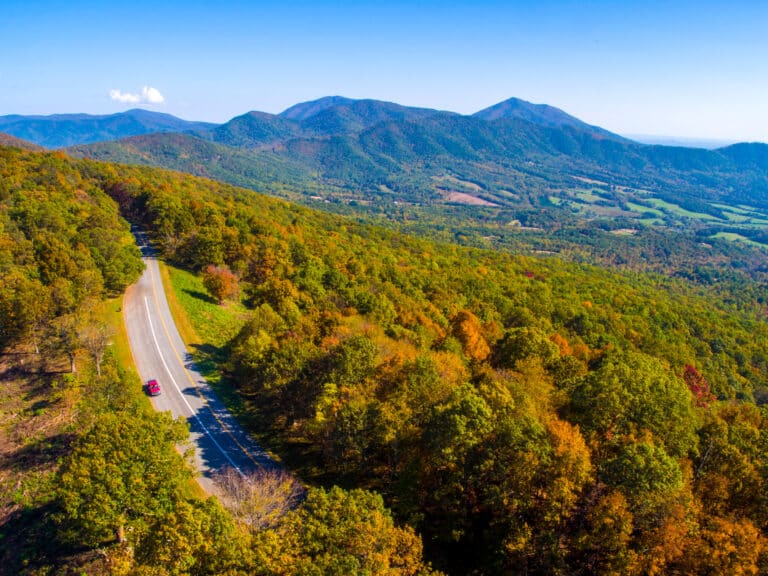The pristine headwaters of the Tellico River are directly below one of the messiest mud holes in the region. The Tellico Off-Road Vehicle Area in North Carolina’s Nantahala National Forest has over 40 miles of off-highway vehicle (OHV) trails—twice as many as are legally allowed by the U.S Forest Service. Poor management of the area combined with four-wheeler abuse has resulted in thousands of tons of sediment being washed into the Tellico River.
“I’ve been working on Tellico for ten years and have watched fish populations plummet,” says Michael Smith, coordinator of the North Carolina chapter of Trout Unlimited. “The headwaters of the Tellico is the largest habitat of native brook trout in North Carolina. The trout are all being pushed upstream above the off-highway vehicle sediment. This is an issue about water quality and the health of an entire ecosystem.”
According to the U.S. Forest Service’s own calculations, nearly 26,000 tons of sediment have washed into the Tellico River and surrounding streams since the trail system was built. On average, each mile of Tellico trail sends 50 tons of sediment into the stream system every year.
When Trout Unlimited and a coalition of environmental organizations threatened to sue the Forest Service for the blatant violation of the Clean Water Act, the agency promptly closed Tellico to vehicle traffic through the wettest months of the winter in order to perform an environmental assessment. Last June, the Forest Service released a proposal to reduce the amount of trails from 40 to 24 miles, prompting the Southern Four Wheel Drive Association to announce its intent to sue the forest. The lawsuit was retracted to give the Nantahala National Forest a chance to prepare a management plan proposal for the Tellico based on the environmental assessment.
Similar legal battles are being played out across the country as federal agencies attempt to reign in rampant abuse of public resources by four-wheel-drive enthusiasts. Nationally, the Forest Service manages 287,000 miles of roads and 32,000 miles of trails open to off-road vehicles, all of which has gone essentially unmanaged for decades.
“Off-road use has always been a problem on public land,” says Karen Schaumbach, a coordinator for PEER (Public Employees for Environmental Responsibility) who is dealing with rampant off-road use on a national level. “But the numbers of off-roaders has grown explosively in recent years. There are tens of thousands of user-created ATV trails, and even the legal trail systems are causing erosion and water quality problems.”
The illegal trail proliferation and poor management of legal systems even led to a Senate oversight committee hearing on the matter last summer, when New Mexico Senator Jeff Bingaman, the chairman of the Senate Energy and Resources Committee, stated that unmanaged off-road use has resulted in “significant consequences for the health of our public lands…It appears questionable to me whether [the Forest Service is] able to properly manage [off-road] use.”
Many off-road enthusiasts worry that this recent push for trail management will ultimately lead to the ban of off-road vehicles from their favorite trail systems, particularly here in the Southeast where OHV areas are more confined.
“There is a real fear of permanent closure [in Tellico],” says Jay Bird, president of the Southern Four Wheel Drive Association. “Closures all across the country are the result of powerful anti-access groups pushing their agendas on public land managers who crumple at the first sign of a threat. Because of biased stereotypes created by anti-access groups, legislators feel forced to act with the more powerful anti-access groups that hide behind the ‘green’ moniker.”
Southern four-wheel enthusiasts recently lost Anderson Creek in the Chattahoochee National Forest in north Georgia. Anderson Creek OHV Area had six miles of designated OHV trails and over 13 miles of illegal user-created trails. The Forest Service closed the illegal trails in 2004, but when site degradation continued, they closed the entire trail system permanently. In Tennessee, two privately owned OHV parks were closed by the state because of violations of the Clean Water Act.
According to a Forest Service study performed in 2000, the water quality issues and suppressed fish populations often associated with OHV areas are due primarily to density: too many OHV trails in too small of an area. This trail proliferation, which has gone unregulated because of a lack of agency resources, has resulted in mini-Tellicos all across the nation.
D.J. Gerken, a senior attorney at the Southern Environmental Law Center—the organization that threatened legal action to protect Tellico—says the Forest Service’s unofficial policy of leniency with OHV users is responsible for the environmental issues surrounding Tellico. “If a developer built roads that looked like Tellico, the state would have come down on them with a hammer.”
Still, Gerken and other environmentalists insist they’re not looking to ban off-road vehicles from the nation’s forests. “[Off-roaders] think we’re gunning for them. That’s not the case. We just don’t want the mess,” Gerken says. “At the end of the day, you have to be performance-based on this issue. You can have your trails if the dirt stays out of the water. If not, then they have to be shut down.”










